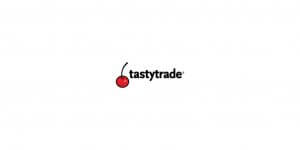OANDA plays an ace against Australian OTC trading restrictions, goes for pro traders with 1:100 leverage
OANDA Corporation’s Australian division has launched an account with higher leverage for professional traders. During the regulatory reforms by ASIC, many Australian brokers began an attempt to lobby the regulator to accept different leverage rates for different levels of trader.

Several years of regulatory wrangling recently culminated in yet another blow to the CFD market at the hands of Australian regulatory authority ASIC, which in October last year passed new regulations severely limiting how CFDs are sold, executed and marketed, and restricting leverage considerably.
Many FX brokerages in Australia had understood for a very long time now that this was likely to occur, the earliest example of which was explained to FinanceFeeds five years ago by Australian senior FX executive David Batten who raised some very important points concerning ASIC’s clampdown on margin electronic trading firms.
A few years later, Britain’s FCA made significant restrictions to the method by which CFDs are marketed and sold, causing many of the large companies in the UK to form a lobby group, working with the regulator to attempt to reach a middle ground, one of which was IG Group, led by Peter Hetherington who resigned very soon afterwards after a quarter of a century with the firm. Perhaps the David and Goliath battle between the exchanges which were encouraging regulators to bear down on CFD firms so that they could get the retail client bases back onto exchanges.
This would have been the only method by which it would be possible to do that, as electronic trading firms are far more attractive to retail traders than expensive, slow and bureaucratic exchanges.
Now, Australia is following suit in a move that is likely to have a significant impact on the second largest CFD market in the world after the UK, meaning that now, all CFD providers, given that Australia and the United Kingdom are the main target markets, may well have to reconsider their product range.
As far as this new legislation is concerned, ASIC has made a product intervention order imposing conditions on the issue and distribution of CFDs to retail clients.
ASIC’s order strengthens consumer protections by reducing CFD leverage available to retail clients and by targeting CFD product features and sales practices that amplify retail clients’ CFD losses. It also brings Australian practice into line with protections in force in comparable markets elsewhere.
From 29 March 2021, ASIC’s product intervention order will:
- restrict CFD leverage offered to retail clients to a maximum ratio of:
- 30:1 for CFDs referencing an exchange rate for a major currency pair
- 20:1 for CFDs referencing an exchange rate for a minor currency pair, gold or a major stock market index
- 10:1 for CFDs referencing a commodity (other than gold) or a minor stock market index
- 2:1 for CFDs referencing crypto-assets
- 5:1 for CFDs referencing shares or other assets
- standardise CFD issuers’ margin close-out arrangements that act as a circuit breaker to close-out one or more a retail client’s CFD positions before all or most of the client’s investment is lost
- protect against negative account balances by limiting a retail client’s CFD losses to the funds in their CFD trading account, and
- prohibit giving or offering certain inducements to retail clients (for example, offering trading credits and rebates or ‘free’ gifts like iPads).
Following the very severe blow dealt by the Australian authorities, FinanceFeeds spoke to a senior FX industry compliance consultant who operates his business on behalf of large multinational banks, commodities firms and brokerages. He referred us to a study that was initially carried out in Cambridge, Massachusetts by academics Rawley Z. Heimer and Alp Simsek of the US National Bureau of Economic Research, which is a think tank that nestles in the same community as private Ivy League institutions including Brandeis and Harvard universities.
This research was initially written in 2017 and focused on the effects of the use of leverage in global OTC derivatives, however since ASIC has been issuing its proposals, the two academics have made revisions to their study, based on exactly these proposals.
This particular study’s most recent research begins very early in what is an extremely comprehensive works, and last week was amended to show that, bearing in mind regulations in US restrict retail clients to 50:1 leverage in FX and market participation reduced from 30 margin brokers to 4 in 2011 which has since dwindled to just three, retail customers saved 40% on equity, had a 23% reduction in turnover, a 25% reduction in broker surplus equity and no discernible reduction in spreads.
The compliance consultant that referred to this said “This was a win/win situation for many retail customers especially if they were novice traders, but the loser in that case was the FX margin brokers. Of course, Australia has around 65 FX margin brokers and leverage may well go down to somewhere between 20:1 – 30:1, so maybe the landscape for broker here will be affected but the large firms will simply follow the path of the ones that stayed in America such as your reference last week to Interactive Brokers, or will attract a different client who will put more margin capital in and carry on trading with less risk, as happened in Japan.”
Now, as the actual restrictions are in view and the effective date approaches, some brokers are preparing to sustain their business by adapting their product ranges accordingly.
OANDA Corporation is one of the early adopters. FinanceFeeds spoke today to OANDA’s Australian division which has introduced a new Professional Trading account in Australia that enables clients to trade forex and CFDs with higher leverage ratios, margin relief and volume rebates. The OANDA Professional Trading account is open only to long-term traders with a proven knowledge of the markets and the inherent risks.
Anthony Griffin, Managing Director of the firm’s Australian operation explained, “We’re delighted to introduce our new Professional Trading account, which will allow experienced clients to access a range of features including 100:1 leverage, margin relief when they place a guaranteed stop-loss order, and attractive volume rebates. However, this account is not for everyone. Traders must meet stringent criteria in order to qualify as a wholesale client or sophisticated investor before they can upgrade to the Professional Trading account.”
Mr Griffin continued, “Over the course of our 25-year history, OANDA has earned a reputation for combining cutting-edge trading technology and institutional-grade execution, continuously striving to introduce new products that meet the ever-changing needs of traders. We believe our new Professional Trading account clearly demonstrates the firm’s ongoing commitment to helping our clients become successful self-directed traders while also ensuring we continue to meet our regulatory responsibilities.”
Governed by the Corporations Act, wholesale client status is determined on financial qualifiers, financial literacy and product knowledge, while sophisticated investor status is determined on trading history, market experience and product knowledge.
OANDA has made it clear that clients should also note, by upgrading to a Pro Trading account, they agree to waive certain protections.
By the middle of last year, it was clear that many Australian brokerages had attempted to enter a consultancy with ASIC in order to attempt to be able to offer higher leverage to professional traders, or traders who can demonstrate that they have been in the market for over two years and have a certain degree of margin capital. Nothing was made concrete by the regulators at the time, however OANDA has taken the lead in launching such a product.
Good on OANDA for not taking their business offshore and keeping an ASIC license for marketing purposes. It is clear that we certainly shape our own future in this industry.









